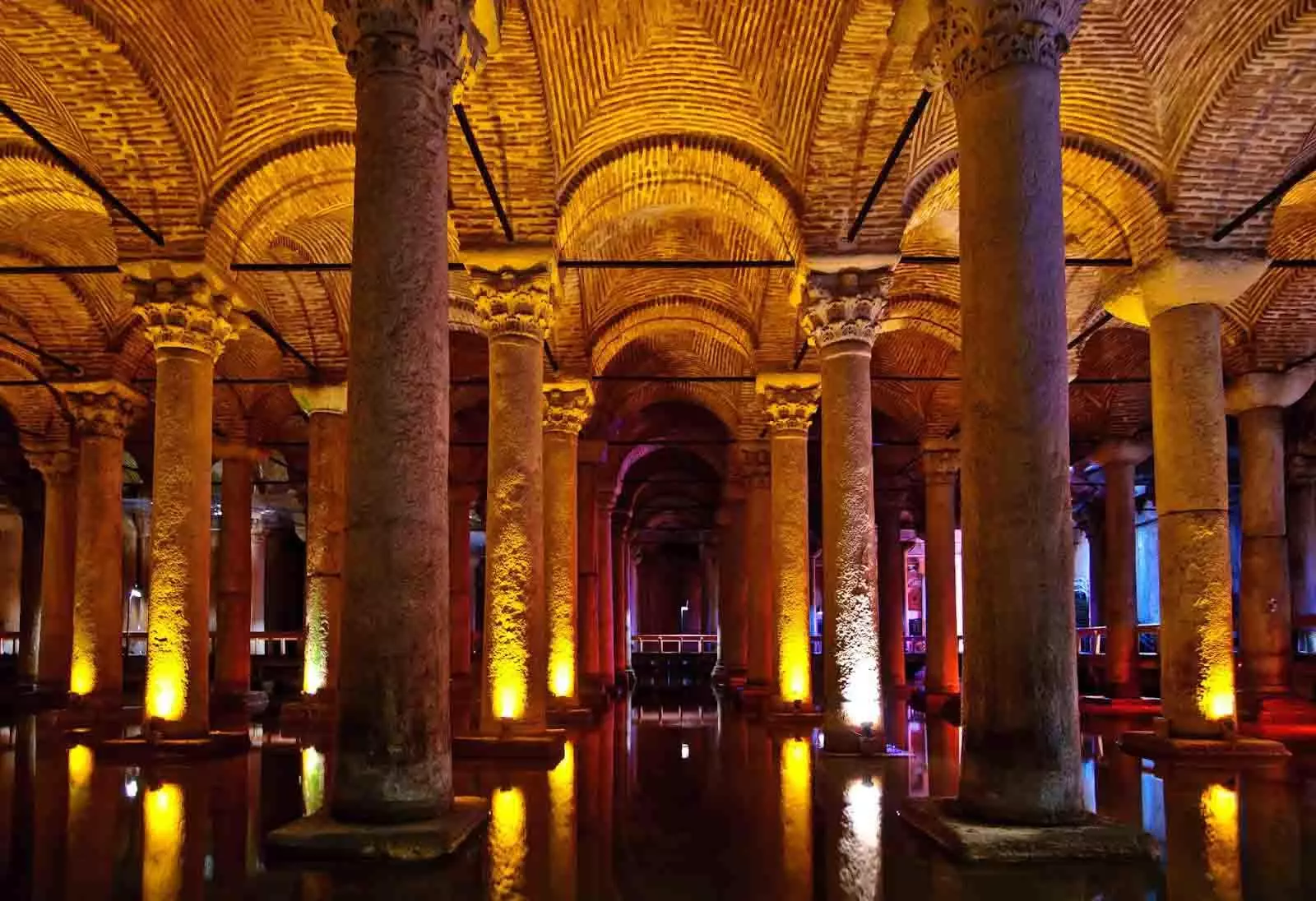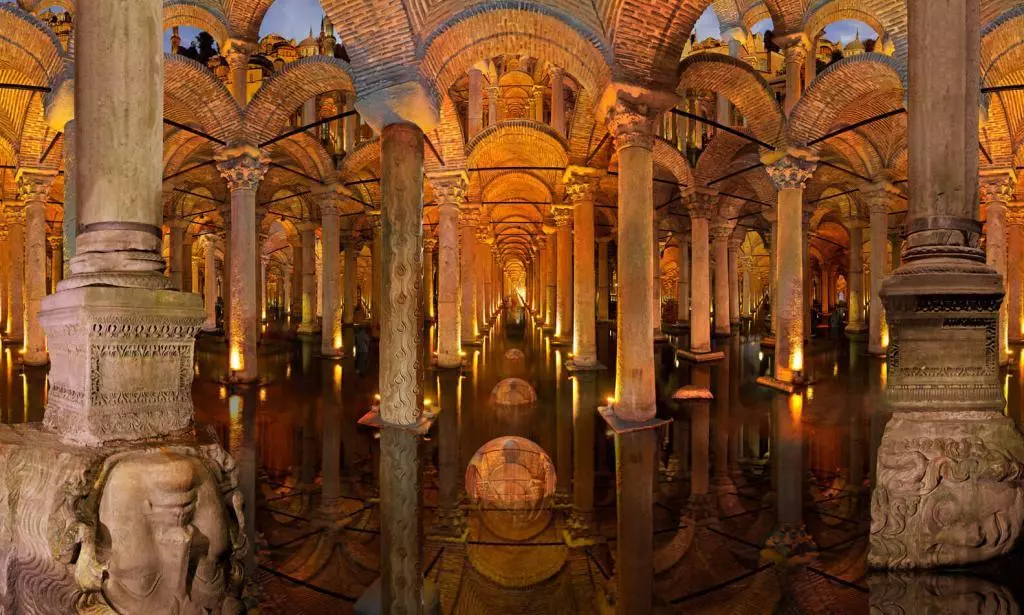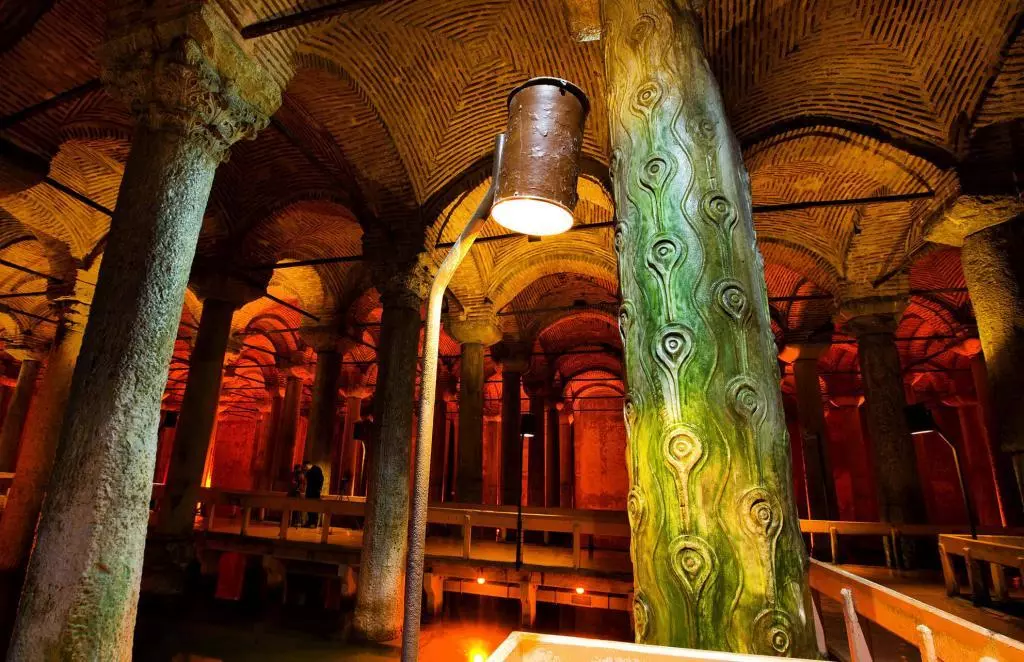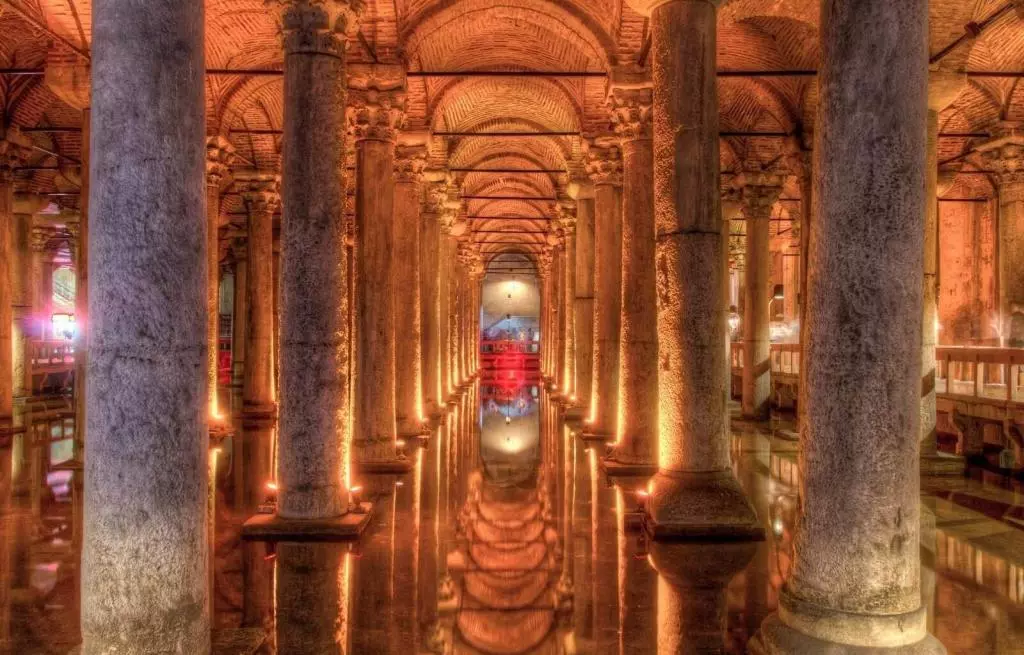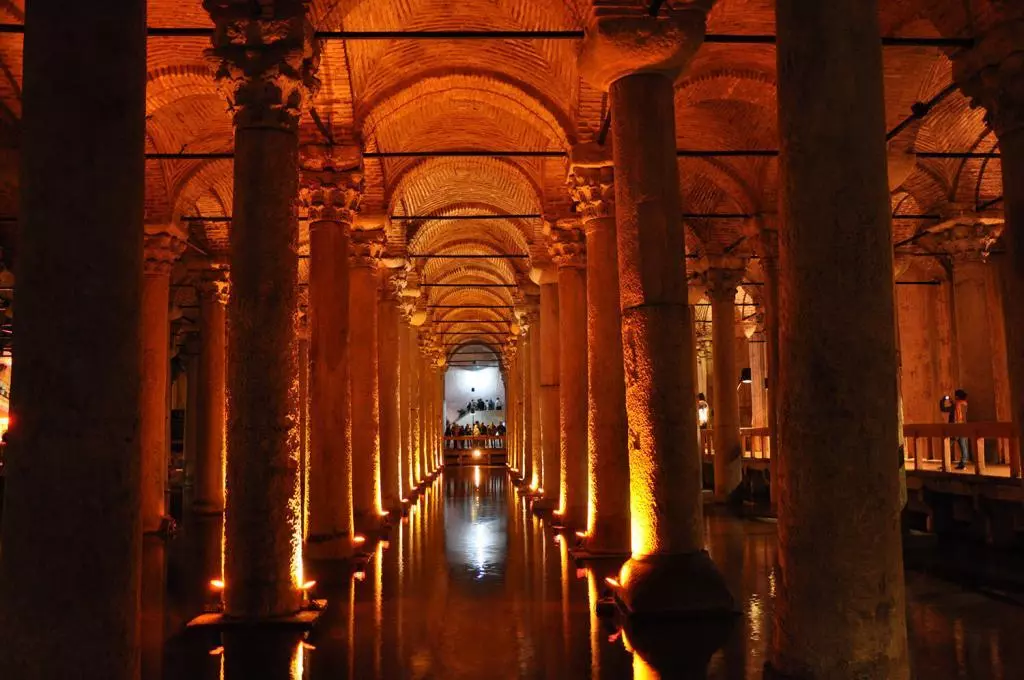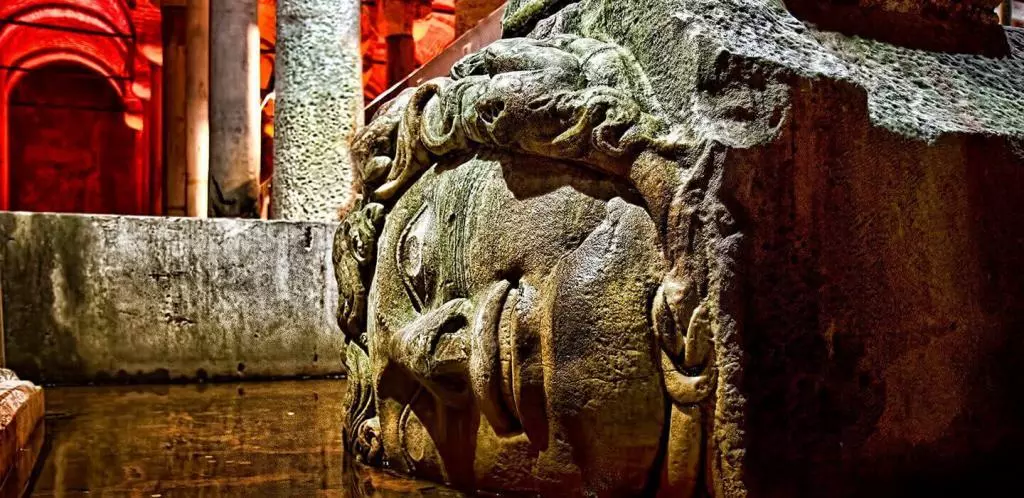The Basilica Cistern fascinates everyone because of the mystical air. It is one of the most special places of İstanbul with its extraordinary structure. It is considered to be among the oldest and magnificent constructions which year of built based on the Byzantine period. While visiting the cistern, you can improve your knowledge of history and find peace in a quiet environment.
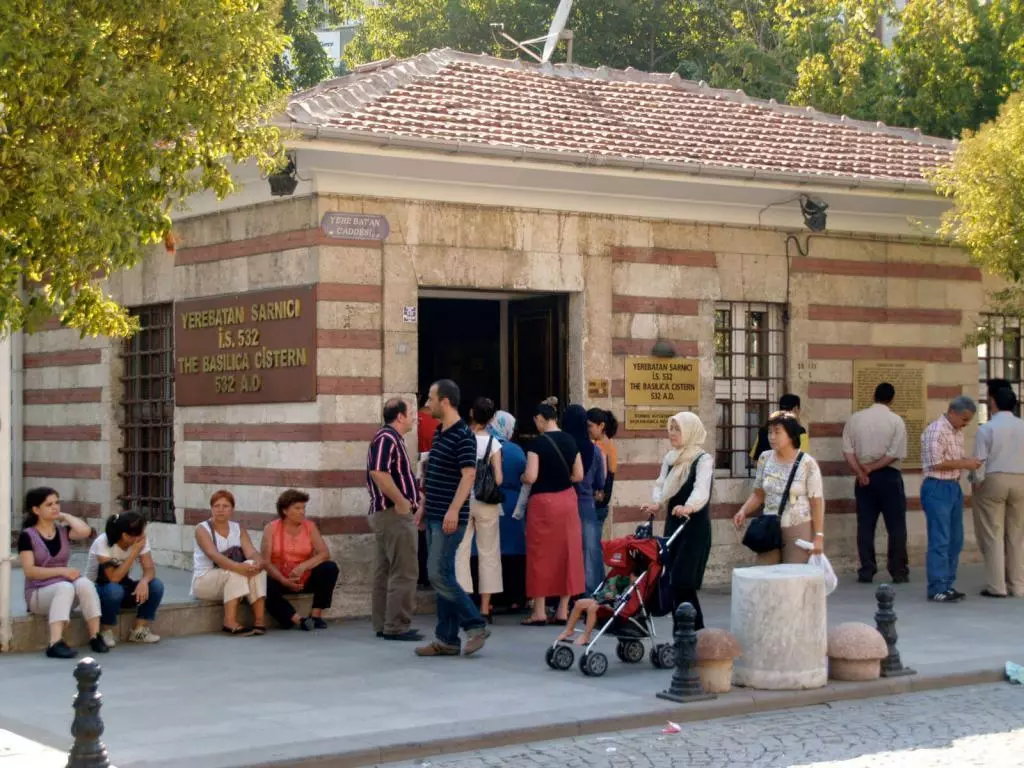
Information about Basilica Cistern
Basilica Cistern contains a total area of 9,800 square meters. It has a water storage capacity of almost to 100.000 tons. To reach inside of the cistern, there is the 52-step stone ladder. The interior of the building is supported by 336 columns; each of them is 9 meters in height and 4.80 meters distances.
The 28-lines and duodecimal orders, including the Medusa Heads which became the matter to the legends, are also added to the structure. Most of these columns were collected from the formerly considered old structures. Due to this situation, which adds structural diversity in terms of architecture, you can easily recognize the heads of the Corinth and Dor style columns when you are walking.
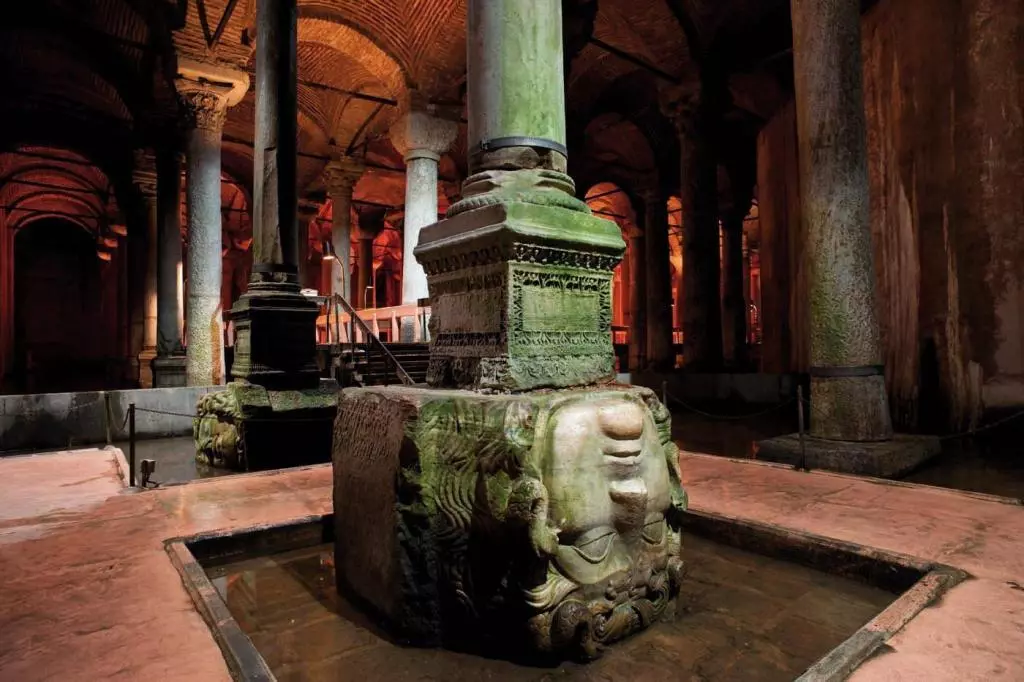
In order to carry the heaviness of the wall, the ceiling of the cistern is supported by belts. The base was built using bricks. In order to provide waterproofing of the 4.80-meter walls, Khorasan Mortar was used in a thick form.
The magnificent cistern has a length of 140 meters and a width of 70 meters. It is called “Basilica Cistern” because of the old religious structure where it is located. Compared to similar structures, it is very huge. The use of the name “Yerebatan Palace“, which takes its origin from the polystyle columns, is quite common.
History of Basilica Cistern
It was built by the Byzantine Emperor Justinian I in 532. The cistern has been used to provide the water needs of the Great Palace. In the construction, 7,000 slaves were employed. To the gigantic structure, the water was provided by two arches extending to the Eğriapı and the center of Taksim in the Belgrad Forests which located 19 kilometers away from the city. One of these arches was built 971 meters by Emperor Valens and the other, 116 meters, was built by Emperor Justinianus.
The city entered into the domination of Ottoman in 1453. Then the cistern was used for a short time to provide the water needs of the gardens in Topkapı Palace. However, because of the Ottoman Empire in which Islamic believes were reversed, the use of the building was abandoned.
It was doomed after the Ottomans established their own systems. The discovery of the Dutch P. Gyllius, who came to Istanbul to research Byzantine remains between 1544 and 1550, made it famous among the westerners. The reputation of the exploration has increased after writing in a travel book. The cistern has undergone two major renovations in the Ottoman period. The first one of these restorations was made under the leadership of Kayserili Mehmet Ağa during the Ahmet III period and the second one is in during Abdülhamit II period.
An accident occurred during a construction work in the region between 1955 and 1960. The result of the accident caused the breakage in 8 columns towards the middle of the northeast wall of the structure. Despite the fact that the columns were covered and reinforced with a thick concrete layer, the traces of accident can still be seen clearly.
Today it is a frequent destination of culture tours. To the cistern, walking platforms were added during the cleaning and restoration work carried out in the municipality in 1987. It has been opened to the public visiting since that date. The cistern hosts to artistic activities as well as tours.
Significant Sections to visit in Basilica Cistern
The most interesting part of the cistern is the Medusa Heads, which were placed to support the two columns in the northwest corner. Despite the various investigations, it was not possible to determine from which structure they were brought here. As the popularity of these columns increased over time, the creation of legends about them, based on Greek mythology, was not delayed.
According to the most famous of these legends, Medusa was one of the most beautiful women of ancient time with her black eyes and long hair. Zeus’s son had a love with the semi-god Perseus. Medusa was sentenced to eternal damnation by jealous Athena. As a result of Athena’s wrath, there was no trace of her beauty. As Medusa’s long hair turns into a snake, it begins to turn men who look daring to look at her into stones.
According to another story, it was believed that the purpose of Medusa Heads here was to protect the region. In this version of the story, it is mentioned that the mythological creature was one of the three female monsters in the underground world.
In the Basilica Cistern travel, another section that I think you might be interested in during your travel is a column decorated with various carvings and embossments. In the past, this column with tear-shaped patterns was believed to represent hundreds of slaves who died during construction.
Where is Basilica Cistern and how to go?
It is one of the most special structures of Byzantine architecture. The cistern is located in Sultanahmet Square. On one side, there is the Hagia Sophia Museum and on the other side, there is the Blue Mosque. The most practical way to go to this historic building is to use the tram that serves between Kabataş and Bağcılar.
After a short walk, you can arrive at the cistern after you get off the Sultanahmet Stop. Other options for people who prefer to use public transport are the municipal buses to Eminönü and Marmaray.
The Admission Charge of Basilica Cistern in 2017
Due to its cultural features, you can add it to your list of Places to visit in Istanbul. 5 TL for students and 10 TL for adults who want to visit are requested. Foreign people are required to pay 25 Turkish Liras to enter the building.
Since it is not under the Ministry of Culture, the facility is excluded from the Müzekart.
Visiting Day and Hours of Basilica Cistern
The Basilica Cistern Museum is open for 7 days a week. There is only one exception, but you can visit 09.00-17.30. The exception is valid for day 1 of the religious holidays. The building is opening at 13.00 noons on the first days of Ramadan and Greater Eid.

